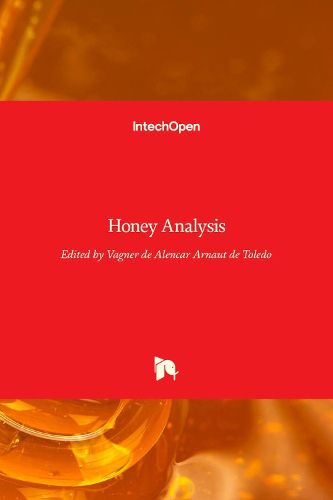Readings Newsletter
Become a Readings Member to make your shopping experience even easier.
Sign in or sign up for free!
You’re not far away from qualifying for FREE standard shipping within Australia
You’ve qualified for FREE standard shipping within Australia
The cart is loading…






The book Honey Analysis has 15 chapters divided into two sections: one section that is dedicated to the analysis of bioactive, physicochemical, and microbiological compounds and another that addresses techniques for the detection of residues and heavy metals. We have been able to compile a book with chapters by authors from nine countries (Brazil, Chile, Italy, Malta, New Zealand, Poland, Romania, Serbia, and Turkey) and at least three continents (South America, Europe, and Oceania). The topics discussed here are physical-chemical analysis of honey, new methods for amino acid analysis, chemical residues, heavy metals, phenolic content and bioactive components, microbiological analysis, antimicrobial activity, and honey as functional food. Also there are notions of trade and characterization of honey in these countries, presenting the reality of the local market of these countries and their perspectives so that we can know more about the techniques used as well as the importance of this activity for each country. This may facilitate the use of innovative techniques that may enable increased competitiveness and the world honey trade.
$9.00 standard shipping within Australia
FREE standard shipping within Australia for orders over $100.00
Express & International shipping calculated at checkout
The book Honey Analysis has 15 chapters divided into two sections: one section that is dedicated to the analysis of bioactive, physicochemical, and microbiological compounds and another that addresses techniques for the detection of residues and heavy metals. We have been able to compile a book with chapters by authors from nine countries (Brazil, Chile, Italy, Malta, New Zealand, Poland, Romania, Serbia, and Turkey) and at least three continents (South America, Europe, and Oceania). The topics discussed here are physical-chemical analysis of honey, new methods for amino acid analysis, chemical residues, heavy metals, phenolic content and bioactive components, microbiological analysis, antimicrobial activity, and honey as functional food. Also there are notions of trade and characterization of honey in these countries, presenting the reality of the local market of these countries and their perspectives so that we can know more about the techniques used as well as the importance of this activity for each country. This may facilitate the use of innovative techniques that may enable increased competitiveness and the world honey trade.